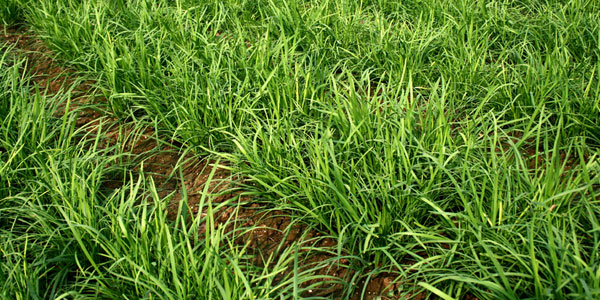
Whether you’re looking for a topping for your favorite savory dish or just want to try a new herb, chives are a top choice for any gardener. A member of the onion family, this perennial herb is surprisingly simple to grow. Once the plants are established, you’ll have chives forever!
Table of Contents:
Before You Plant
Choose the Right Type of Chives:
- Two types of chives are available, depending on your taste. The most common type is the onion chive which has an onion flavor.
- A second variety, the Chinese Chive, has a hint of garlic flavor to it.
Find a Suitable Place:
- Chives can be grown almost anywhere. They thrive in both window boxes, indoor and out, as well as in gardens.
- Chive plants produce beautiful flowers which makes them a perfect addition to landscaping.
- An area with full sun is best, but a significant amount of shade will also be tolerated by this hardy plant.
- An area that provides good drainage will produce the best quality chive plants.
Prepare the soil:
- Before planting, loosen the soil very well and mix in organic matter or rotted compost. This provides the rich soil that promotes growth.
- Bonemeal can be added to the soil (about 1-2 cups per square yard) to create the optimum soil conditions.
- Chives prefer the acidity level of the soil to be around 6.0 – 7.0 pH. There are soil testing kits available at most gardening or home supply stores, or you can have your soil tested by a professional to find out if any adjustments are necessary.
- The above soil methods are optimal, but not necessarily required as chives will grow in almost any average, well-drained soil. However, if the soil is prepared as above, no future feeding will be required.
Planting Chives
What You Will Need:
- Chive seeds or seedlings
- Prepared soil
- Fertilizer (optional)
Steps for Planting Chives:
- Chives seeds can be started indoors (six weeks before spring) and then transplanted, or seeds can be sown directly into the soil at the beginning of spring.
- Properly prepare the soil before planting.
- Following the packet directions, sow the seeds onto moist soil.
- If planting bulbs, it’s best to plant them in bunches – about 5 bulbs to a bunch. Space the plants about four inches apart.
- Fertilizer is often unnecessary; unless soil conditions are poor and no additions were made to the soil prior to planting.
- Over time the bulb part of the chives will grow and expand into a clump of bulbs. New plants can be propagated from this clump of bulbs using division. Every few years, dig up the root bulbs and separate into individual bulbs. Replant each individual bulb so the tip is level with the soil, about 2-3 inches apart. Each bulb will grow into a new plant.
Growing/Harvesting Chives
Chives continue to grow continuously all season long. They will grow year-round if planted indoors. To get the most from your plant, follow these steps.
What You Will Need:
- Garden clippers or scissors
Steps for Maintenance and Harvesting:
- As long as weeds are kept under control, and they are watered when the weather is very dry, chives will continue to grow.
- As soon as the leaves have reached several inches in height, you can start removing the needed portions.
- Begin by removing the outer-edge leaves and working inward. Cut the leaves with scissors, leaving 1-2 inches above the ground.
- Once flowers appear, purple pom pom flowers on onion chives or white flowers on garlic chives, cut the stems back.
- To promote new growth, cut back whenever the height exceeds six inches.
Additional Tips and Advice
- Since the leaves of the chives are eaten, avoid using any pesticides or sprays. If pests become a problem, try an organic treatment. Be sure to check the label carefully.
- Chives are high in vitamin C.
- Chive flowers are edible and make beautiful additions to salads.
- When growing chives in containers, fertilize once a month and water whenever the compost begins to dry out.
- It is best to divide chive bulbs in either March or October.
- Avoid planting chives near onions as it increases the chances of a common pest, the onion fly, attacking your plants.
- Most chives will keep their leave through the winter. However, if the winter is harsh and the leaves die, do not worry – they’ll return with new growth in the spring.